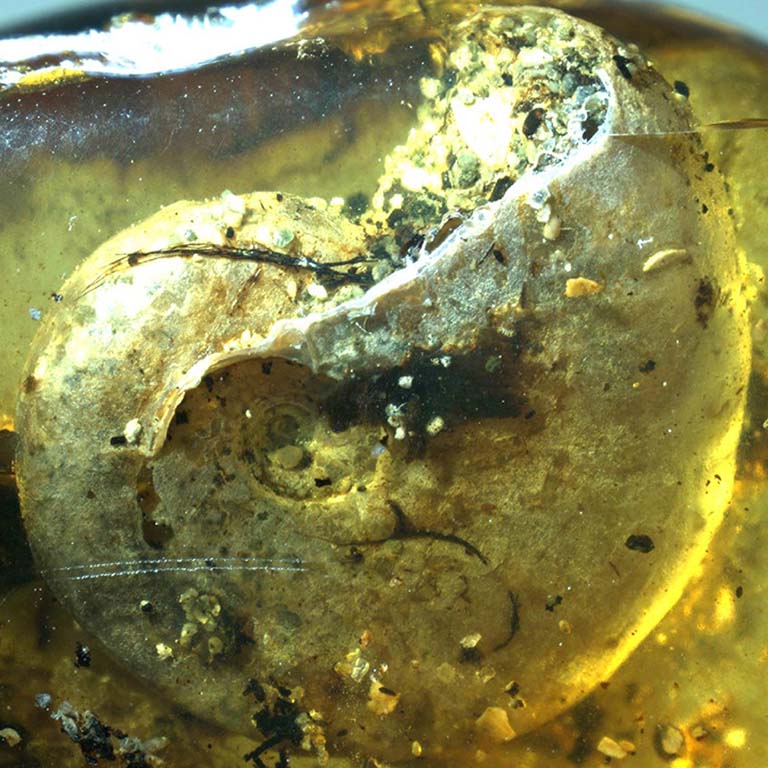A 100-million-year-old lump of fossilized tree resin discovered in the mines of northern Myanmar is helping scientists shed new light on ancient sea life.
The fossil is the first known record of an ammonite -- a distant relative of modern squid and octopuses -- found in amber. It was analyzed by an international team of scientists, including Indiana University Professor Emeritus of Biology David Dilcher, whose findings were recently published in the journal PNAS.
The fossil is significant and surprising, he said, because amber is formed on land from resin-producing plants, so it is rare to find marine life entombed in the substance.
"The excitement of the discovery is its potential to open the window on past life," he said. "The preservation of amber from an age as old as this, it helps increase our understanding of ancient life and the world in which ancient life lived."
Ammonites were shelled mollusks that lived on Earth during the Jurassic and Cretaceous periods—the same time as some dinosaurs. Typically fossilized as impressions in shale, ammonites' preservation in amber provides a unique 3D look at the ancient sea creatures, Dilcher said.
In addition to trapping the shell of an ammonite, this particular piece of amber contains the fossils of at least 40 other organisms from both land and sea habitats, such as spiders, snails and wasps. In time, it is this diversity of organisms preserved in one place that may have the most potential for future research, Dilcher said.
Possible theories for how land and sea organisms ended up trapped together include a coastal forest with resin-producing trees growing close to marine debris on the edge of a beach, a tsunami that flooded an amber-producing forest with marine debris, or tropical storms that blew marine debris inland, Dilcher said; however, the scientists posited that the first theory seems most likely because the lack of soft tissue from the ammonite and other marine organisms preserved in the amber suggests they were dead long before their shells encountered the ancient tree resin. This makes the tsunami theory less likely, and the rarity of the presence of marine organisms in other amber specimens found to date suggests the tropical storms wouldn't have been frequent occurrences.

 The College of Arts
The College of Arts